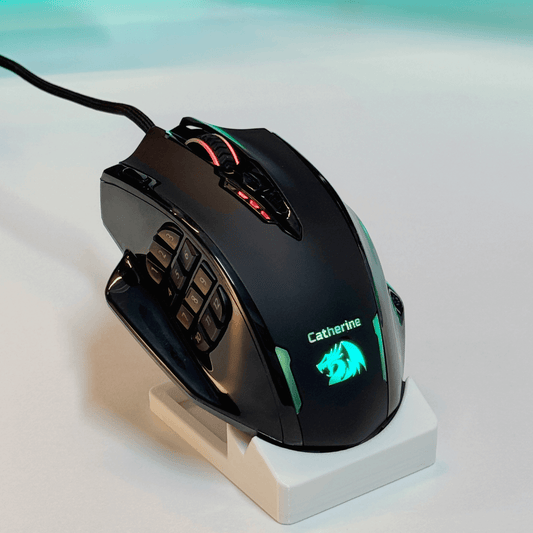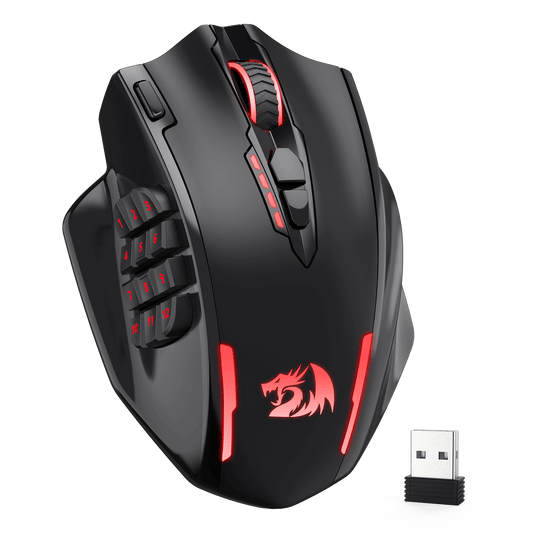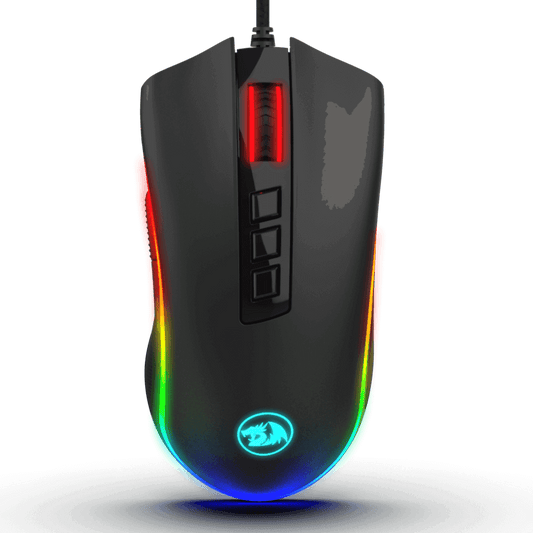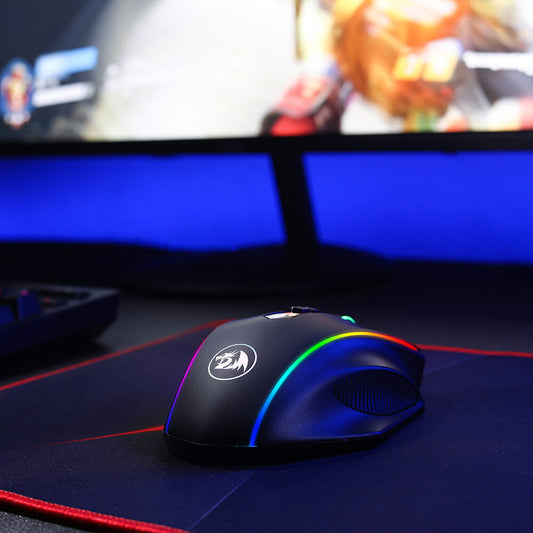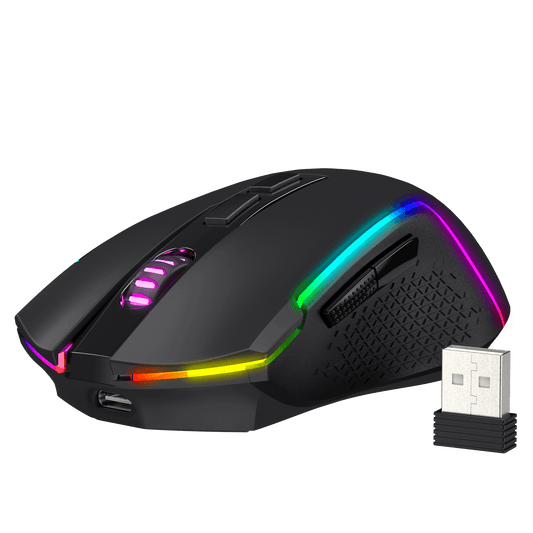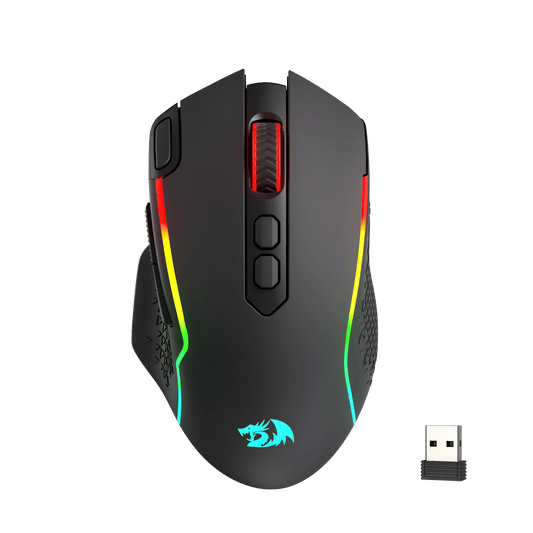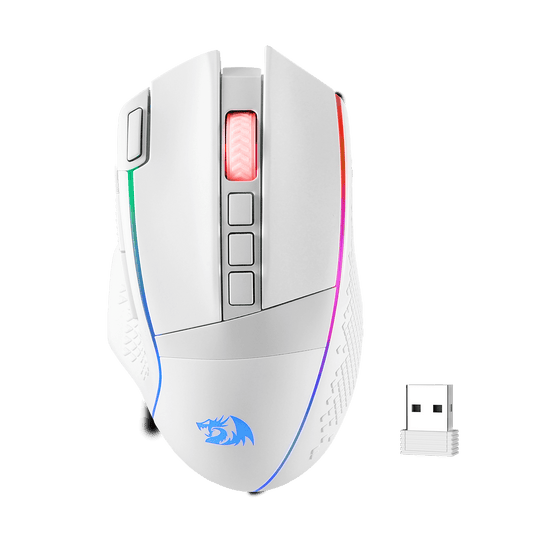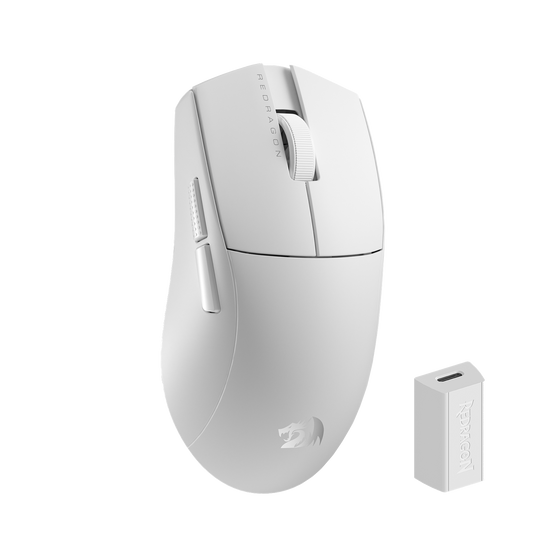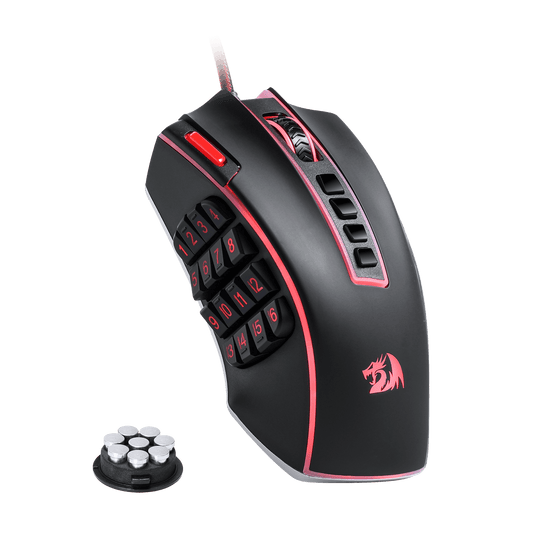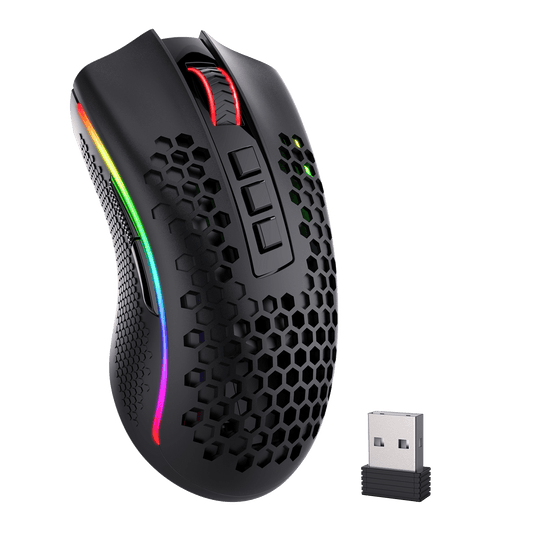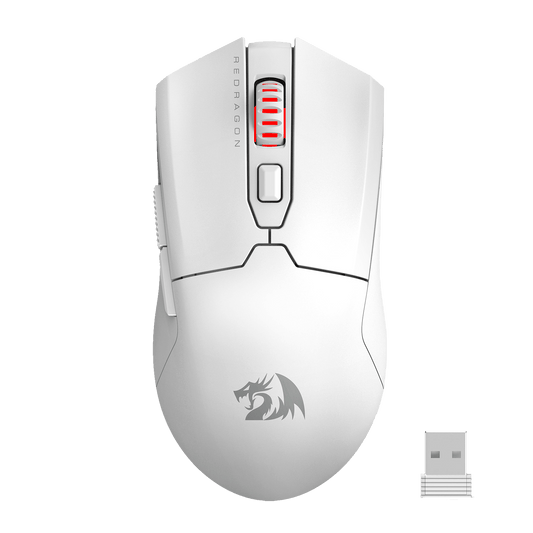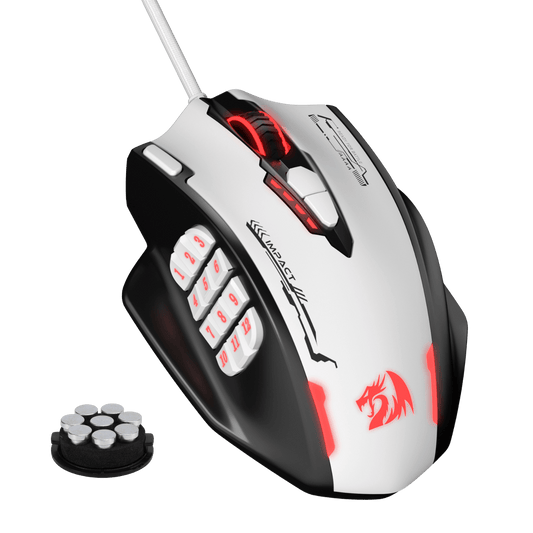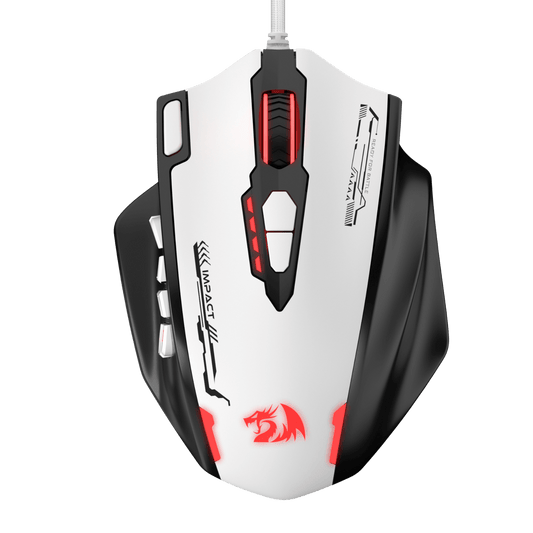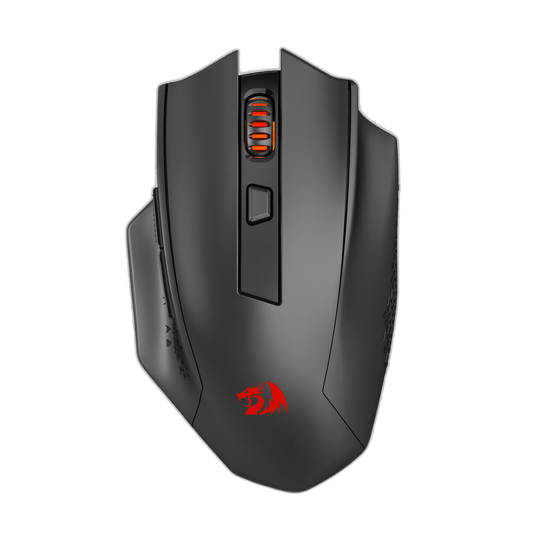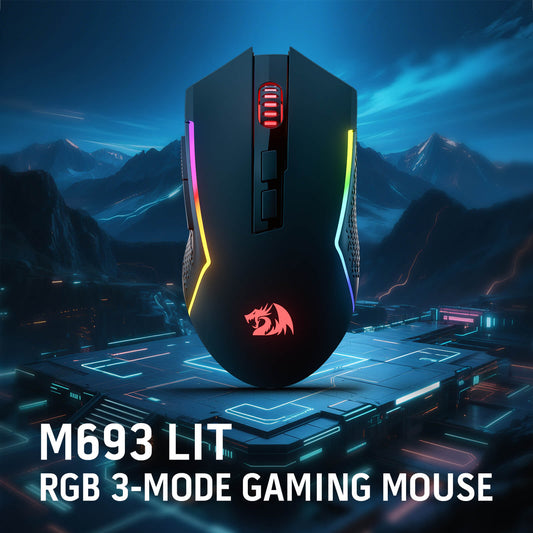Introduction
In the adrenaline-fueled world of competitive gaming, where precision and speed often dictate the thin line between glory and defeat, gamers continuously seek techniques to gain an edge over their opponents. Enter the realms of "Drag Clicking" and "Butterfly Clicking," two advanced methods that have revolutionized the way players interact with their gaming mice. These techniques are not just about the clicks but represent a blend of skill, strategy, and the relentless pursuit of gaming perfection.
Table of Contents:
What Are Drag Clicking & Butterfly Clicking On A Gaming Mouse?
Drag Clicking is a technique that exploits the friction between the finger and the mouse button to generate multiple clicks with a single motion. Players lightly drag their finger(s) across the button, causing it to rapidly press and release due to the tactile feedback from the mouse's surface and button design. This method is especially popular in games requiring a high clicks-per-second (CPS) rate, as it can dramatically increase a player's clicking efficiency.
Butterfly Clicking, in contrast, is a technique where a player uses two fingers (typically the index and middle finger) to alternately click the mouse button. This creates a rapid, rhythmic clicking pattern that significantly increases the CPS rate. Unlike drag clicking, butterfly clicking relies more on finger dexterity and less on the physical properties of the mouse, making it a universally applicable technique across different mouse models.
What is the Difference Between Drag Clicking and Butterfly Clicking?
The primary difference between drag clicking and butterfly clicking lies in their execution and the physical principles they exploit. Drag clicking capitalizes on the frictional force between the finger and the mouse button, requiring a specific type of mouse surface that can support this action. It's a technique that might not work as effectively on all mice, especially those with smoother surfaces or less responsive click mechanisms.
Butterfly clicking, however, depends on the player's ability to efficiently alternate clicks between two fingers, essentially doubling the potential click rate achievable with just one finger. This method can be used with virtually any mouse, regardless of its surface texture or button resistance.
Pros and Cons of Drag Clicking
Pros:
-
Increased Click Rate: The primary advantage of drag clicking is its ability to substantially boost the number of clicks per second (CPS). This can be a game-changer in situations where rapid clicking is essential.
-
Versatility: With the right mouse and technique, drag clicking can be employed in various games, providing players with a versatile skill that can be adapted to different scenarios.
-
Competitive Edge: In games that heavily rely on fast and precise clicking, mastering drag clicking can give players a significant competitive advantage over opponents who use conventional clicking methods.
Cons:
-
Hardware Dependency: Effective drag clicking often requires a specific type of mouse with the right surface texture and responsive buttons. Not all mice are suitable for this technique, limiting its accessibility.
-
Physical Strain: The rapid finger movement involved in drag clicking can lead to physical strain or discomfort over prolonged gaming sessions, potentially impacting long-term health.
-
Controversy: Some gaming communities consider drag clicking controversial, with debates about whether it provides an unfair advantage, leading to questions of sportsmanship and fair play.
Short vs. Long Drag Clicking
Short Drag Clicking:
-
Description: Involves rapidly gliding the finger(s) across the mouse button without a long drag.
-
Pros: Quick and efficient for achieving high CPS rates.
-
Cons: May require more precise control, and the potential for accidental misfires increases.
Long Drag Clicking:
-
Description: Involves a more extended finger movement across the mouse button, generating additional clicks during the drag.
-
Pros: Can yield even higher CPS rates compared to short drag clicking.
-
Cons: Requires more significant finger movement, potentially increasing the risk of physical strain.
Is Drag Clicking Cheating?
The status of drag clicking as "cheating" is a topic of ongoing debate within the gaming community. Arguments in favor of considering it cheating often cite the potential for unfair advantages in games that rely heavily on clicking speed. However, opinions vary, and some argue that as long as the technique is achievable within the game's mechanics and doesn't involve external tools or software, it can be considered a legitimate skill. Ultimately, whether drag clicking is viewed as cheating depends on the specific gaming community, ruleset, and the values upheld by the players and organizers involved.
Is it Possible to Drag Click with Any Mouse?
While drag clicking is generally more effective with specific types of mice, it is not universally achievable with every mouse. The success of drag clicking often depends on the mouse's button design, surface texture, and how well it responds to the friction created during the dragging motion. Mice with more tactile and responsive buttons, as well as textured surfaces, tend to be more conducive to successful drag clicking. Therefore, while it may be possible on a range of mice, the level of effectiveness can vary significantly.
How to Drag Click?
Mastering drag clicking involves a combination of technique and mouse control. Here's a general guide on how to drag click:
-
Choose the Right Mouse: Select a mouse with a textured surface and responsive buttons. Gaming mice with a distinct tactile feel often work best for drag clicking.
-
Finger Placement: Position your finger (usually the index finger) over the mouse button. The key is to have enough contact between your finger and the button to generate friction during the drag.
-
Light Pressure: Apply light pressure on the mouse button and initiate a dragging motion. The goal is to maintain a delicate balance where the friction between your finger and the button causes it to rapidly click.
-
Practice Control: Achieving consistency in drag clicking requires practice. Focus on controlling the speed and pressure of your finger's movement to optimize the number of clicks per second.
-
Experiment: Different mice may respond differently to drag clicking. Experiment with the speed and angle of your finger's movement to find the most effective technique for your specific mouse.
Drag-Click With Tape
Some users enhance their drag clicking performance by using tape. Here's a brief guide on how to drag-click with tape:
-
Select the Right Tape: Choose a thin and smooth tape, like electrical tape or medical tape. Avoid tapes that are too thick or have a rough texture.
-
Apply Tape to Finger: Cut a small strip of tape and affix it to the fingertip that will be used for drag clicking. Ensure the tape is securely attached but doesn't hinder your finger's movement.
-
Finger Placement: Position your taped finger over the mouse button as you would for regular drag clicking.
-
Follow Drag Clicking Steps: Proceed with the drag-clicking technique, utilizing the added smoothness and reduced friction provided by the tape to potentially enhance your CPS rate.
Remember that while using tape may work for some individuals, it might not be suitable for everyone or every mouse. Experimentation and practice are key to finding the optimal drag-clicking method that works for your specific setup and preferences.
What is the Easiest Way to Drag Click?
The easiest way to begin drag clicking involves a few simple steps tailored to help newcomers get a feel for the technique. It's worth noting that while these steps aim to simplify the process, success in drag clicking comes with practice and patience.
-
Select a Suitable Mouse: Choose a mouse known for its compatibility with drag clicking. Features to look for include a textured surface and sensitive buttons.
-
Adjust Your Grip: Hold the mouse in a way that your index finger (or whichever finger you intend to use for drag clicking) can comfortably reach and apply pressure to the button without causing strain.
-
Light Touch and Motion: Gently press your finger against the mouse button and perform a quick, light drag motion. The key is to maintain minimal but consistent contact to generate the necessary friction without pressing too hard.
-
Experiment with Finger Position: Some find that starting with the fingertip slightly off the edge of the button can help initiate the drag more effectively. Experiment with different starting positions to see what works best for you.
-
Practice: Like any skill, consistent practice is crucial. Start slow to get a feel for the motion and gradually increase your speed as you become more comfortable.
How to Do Butterfly Clicking?
Butterfly clicking is another effective technique for increasing clicks per second. Here's how you can do it:
-
Position Your Fingers: Place your index and middle fingers on the mouse button you intend to click. Ensure both fingers are comfortably positioned and ready to alternate clicks.
-
Alternate Clicking: Rapidly alternate pressing the button with each finger. As one finger goes up, the other should come down in a seamless, rhythmic motion.
-
Maintain a Steady Pace: Start at a pace you can comfortably maintain and focus on keeping your clicks as consistent as possible. Over time, you can work on increasing your speed.
-
Relax Your Hand: Try to keep your hand relaxed to avoid fatigue. Tension in your fingers or wrist can decrease your effectiveness and lead to discomfort.
-
Practice: Consistency and improvement come with regular practice. Set aside time to practice your butterfly clicking technique, gradually increasing your session lengths as you develop stamina.
What is the Average CPS for Butterfly Clicking?
The average clicks per second (CPS) for butterfly clicking can vary widely among individuals, depending on their skill level, the mouse used, and how practiced they are with the technique. Generally, butterfly clicking can yield an average of 10 to 20 CPS for most users who have spent time mastering it. However, some experienced gamers can achieve even higher rates, sometimes exceeding 20 CPS. It's important to note that maintaining a high CPS also depends on the user's ability to sustain the technique over time without compromising accuracy or causing strain.
Top Drag Clicking Mice from Redragon
The ideal mouse for drag clicking needs to possess a couple of essential characteristics – a matte, non-slip surface to enhance the drag click technique and durable switches from reputable brands like Omron, Kailh, or Optical to endure the intensive clicking action. Wondering which mouse tops the list for drag clicking? Here are some top picks.
FAQ
Is drag clicking unfair?
Drag clicking is viewed differently across gaming communities. Some consider it an unfair advantage due to the significantly higher CPS it can achieve, while others see it as a skill. The fairness often depends on the specific rules of the game or tournament being played.
Is butterfly clicking unfair?
Like drag clicking, opinions on butterfly clicking vary. Since it relies more on finger dexterity and less on the mouse's physical properties, it is often considered less controversial but still may be viewed as providing an unfair edge in some communities.
Is Drag Clicking Bad For The Mouse?
Drag clicking can put additional stress on the mouse buttons and reduce their lifespan due to the rapid, repetitive pressure. Some mice are designed to withstand such use, but others may wear out more quickly.
Can you get banned using Drag Clicking?
In some games, particularly those with anti-cheat systems that detect unnatural click rates, you might risk a ban for drag clicking. Always check the game's policy on advanced clicking techniques.
How to drag click without tape?
To drag click without tape, ensure your finger is slightly moistened (washing hands can help) to increase friction. Practice the technique of lightly pressing and dragging your finger across the mouse button to find the right balance.
How do you make jitter click?
Jitter clicking involves tensing your arm and hand muscles to create a rapid, vibrating motion in your finger, allowing you to click the mouse button very quickly. It requires practice to do it effectively without causing strain.
How fast can speed auto clicker click?
Speed auto clickers, software designed to simulate mouse clicks, can often be adjusted to click at rates of hundreds or even thousands of clicks per second, far exceeding human capabilities. However, using such tools is against the rules in most competitive games.
How do I get more CPS drag clicking?
Improving your CPS with drag clicking involves practicing the technique to find the optimal pressure and speed, ensuring your mouse is suited for drag clicking, and possibly adjusting the grip or angle of your approach.
Can you get 20 cps by butterfly clicking?
Yes, achieving 20 CPS through butterfly clicking is possible, especially with practice and a suitable mouse. However, maintaining such a high rate consistently is challenging and requires skill.
Is 11 cps good?
Yes, 11 CPS is considered a good clicking speed for most gaming purposes. It indicates a high level of skill and can provide a competitive advantage in many games.
How To Drag Click On MacBook?
Drag clicking on a MacBook or its trackpad can be challenging due to the design and surface material. It's generally more effective with an external mouse designed for gaming. If using a MacBook's trackpad, focusing on technique and experimenting with different finger positions may yield some success, although achieving high CPS rates like on gaming mice might not be possible.















